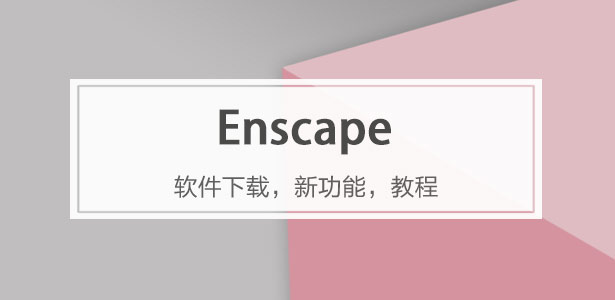
下載app免費領取會員




設計單位? 孔祥偉工作室
項目地址? 云南大理
建成時間? 2025年1月
建筑面積? 350平方米
本文文字由設計單位提供。
▲ 項目視頻? ?直譯建筑工作室
衰敗古村的更新
滇西秘境中,無量山脈的北端,有一個聚居著漢、彝、白、傣、黎、哈尼六個民族的云上村落——云南大理南澗縣碧溪鄉巖子頭村。這個只有71戶人家的小小村落,卻有著300多棵古樹,建筑依山而筑,常年云霧繚繞,景色宜人。如許多偏遠村落,巖子頭村也面臨著人口流失、老宅破敗和鄉村的衰落的問題。由于豐富的旅游資源,因此村民希望通過發展旅游業來振興鄉村。而為了完善旅游服務設施,一個茶旅綜合體與村民文化中心的建設就此被提上議程。
設計面臨三大挑戰:一是春節要啟用建筑,需在45天內完成建設;二是投資較少,需要嚴控成本;三是村子離城市較遠,施工工人為當地村民,沒有成熟的施工技術。



生長式營造方法
文化中心選址在一處廢棄的彝族傳統民居院落,其主建筑均已坍塌,僅留下門樓、牛棚和柴火房。工作室采用在地營造的方式,與村民合作進行駐場設計。面對緊迫的建造時間,團隊用“生長式營造”方法,同步設計與施工,用身體丈量空間,以現場感知驅動建筑形體,將設計—施工的線性流程折疊為同步發生的空間事件,施工現場成為不斷疊加的草圖本。這種工作方法接近中國造園時隨形就勢、步移景異和空間累疊的傳統方式。



地域鄉村建筑的在地性探索
鄉村建筑與自然鄉土以及地域文化的關系緊密,但在各種限制條件下又要實現創新。在此項目中,大理無量山獨特的地理特征造就了四季如春的氣候,多民族聚居的村落建筑充滿了濃厚的鄉土印記。緊迫的施工時間、有限的工程預算以及沉浸式在地營造方式,疊加推動了以下幾個方面的探索:
1、呵護廢墟:場地保留的牛棚、門樓與柴房成為新建筑的時空坐標。我們以“遺址考古”的視角來看待這些破敗的鄉土遺跡,巨石成為庭院焦點,殘墻化作藝術展廊,新的穹頂遮蔽了鄉土遺跡,呵護著平凡的舊時光。

2、彈性生長:與不確定性共進的建筑。在緊迫的建造時間下,彈性的建造方式成為應對挑戰的策略。空間的繁簡和節奏的變化隨著施工時間、造價和村民的手藝而改變。

3、即興劇場:鋼筋為筆的建造方法。由于在地營造的特殊性,鋼筋不僅僅是建筑材料,更成為塑造空間形體的工具,如同立體空間中的鉛筆線條,讓施工現場成為即興創作的場地。

4、輕之探索:“輕”不僅是應對造價的方法,更是一種漂浮于厚重鄉土之上的詩意表達。最薄的混凝土墻板僅6厘米厚,給人紙片般的感覺,體現了對鄉村空間的柔性介入。曲線鋼筋和陽光板構建的半透明穹頂更是對“輕”的極致表達,是對遍布中國鄉村的大棚美學進行的詩意轉化。


5、手作實踐:建筑材料就地取材料,靠人力和騾子駝輸;施工現場經常斷水,因此無法采用商混混凝土而用小機器手工攪拌的混凝土制作;村民即興發揮的手藝。我們主動接納這些隨機性導致的誤差,將之理解為“鄉村粗野主義”:木模板變形造就的粗糲美學,鋼筋的傷痕敘事和焊接瘢痕,記錄著村民共建的手工歷程。

6、風景裝置:多個取景框不同角度捕捉玉女峰的形態。墻畫圓館頂部的光孔投射出光的軌跡,反映著一天內的時光流轉和一年內的太陽運行軌跡,成為光的容器。這種裝置思維使建筑成為連接自然景觀與日常生活的劇場。

7、氣候應答:無量山微氣候的物化實驗。通過地域氣候特征的空間轉譯,應對無量山四季如春,無酷暑嚴寒的氣候特點。白云劇場的穹頂遮蔽了部分陽光,通透的半開放式室內空間在一年大部分時間中都能夠被舒適的使用;光影緩沖,陽光板矩陣將紫外線轉化為柔光濾鏡;雨水劇場,傾斜屋面引導降水形成季節性的水幕裝置。這些低技的氣候應答策略,使建筑成為可感知的環境傳感器。

我們期待鄉村建筑可以成為一種感性容器,與鄉土和自然形成對話。例如,營造過程中突出手工力學,鄉村匠人用最原始的建造方法減輕建筑的視覺重力;陽光板經光的折射產生流轉光波的視覺效果;對應人體尺度的視覺空間,從取景框遠眺精確框定玉女峰輪廓;狹窄且彎曲的墻畫隧道重塑行人步頻節奏。這種微觀的敘事策略也順應了鄉村聚落空間的豐富特質,與周邊建筑和風景產生深度對話。

三幕空間敘事
建筑空間由三部分構成,形成三幕空間敘事。第一個部分是墻畫藝術走廊,同時作為建筑的入口;第二個部分是中心庭院和墻畫圓館;第三個部分是白云劇場。
第一幕:墻畫隧道——壓縮與釋放
墻畫藝術走廊狹窄的隧道式入口構成敘事前奏。在前期調研中,我們發現巖子頭村民居建筑上的墻畫很有特點。墻畫以動物形象和神話圖騰為創作題材,由村民手繪完成,反映了人們對幸福生活的追求。因此設計特地將此墻畫藝術走廊作為村民創作墻畫的展示空間。建筑路徑暗合《桃花源記》的敘事結構:從巖畫隧道啟程,狹窄的入口對應“山有小口,仿佛若有光”,兩側的墻壁設置取景框,向內截取劇場穹頂的局部曲面,向外將玉女峰框定為懸空畫卷。行走其中,路徑幾經轉折,經歷光影交錯的步道,直至幽暗的甬道盡頭豁然開朗,在圓形庭院中完成空間的釋放。



第二幕:中心庭院與圓形劇場——光的劇目
中心庭院原本是老院子的菜園,院子的一隅孤立著一塊巨石。這也是巖子頭村的名字來源:在巨型巖石上生長而成。巨石成為墻畫藝術走廊和中心庭院及廁所交通的轉折點,其下方是一個環形庭院,斜對面是墻畫藝術館圓館,兼具茶室的功能。圓館成為日光的捕捉器:早晨陽光灑在中庭草坪上,正午陽光穿過圓館頂部的光孔,光斑沿著混凝土曲墻的傾角緩慢爬升,直至下午太陽低垂,完成了一場日光默劇。


第三幕:云陣迷宮——解構與重構
六個異形穹頂組成的“云陣”構成敘事變奏。鍍鋅鋼筋編織的曲面網格,在陽光下投射出不斷變形的陰影矩陣;不等傾角排列的陽光板在陽光下產生漣漪般的色散效應,這是平民材料的逆襲;利用陽光板的柔彎特性,將其塑造成拋物面,創造出輕盈的懸浮云朵。不同厚度的板材疊合,形成隨時間變化的透光率矩陣:清晨呈現乳白氤氳,正午化作藍光過濾器,夕陽將泡狀建筑染成琥珀色,最夢幻的便是夜幕中燈光亮起,泡狀建筑宛如點亮鄉村的燈籠。


建筑靈活的空間形式也賦予其多功能的用途,既是面向游客的茶餐廳,亦是充滿夢幻感的多民族記憶存儲器——每逢村子的重大活動和節事,多彩的民族服飾下,歌舞與未來感的劇場交織產生強烈的戲劇性效果。云陣迷宮也是對鄉土空間新形式的探索,富勒式穹頂呵護著彝族民居遺跡,將農民用于搭建大棚的材料演化為藝術裝置。遺存建筑、村民墻畫、古樹、山谷景觀、多民族記憶與新的建筑空間,最終融合成一種新的鄉愁敘事。


貧窮美學的當代鄉村實踐
在中國城鎮化狂飆突進的背后,大量的鄉村正在經歷衰落的危機。當城市建筑以每平方米數千元的造價為基準時,鄉土營造卻長期徘徊在每平方米千元以下的成本紅線。我們希望用低造價進行一場鄉村貧窮美學的探索。陽光板、鋼筋、素混凝土——這些最平常不過的材料,也可以在鄉村中編織出一種新的形式。
“貧窮美學”的實踐其實也暗合著中國鄉土營造的基因記憶。“物盡其用”是中國鄉村建造的一種思想,從福建土樓版筑夯土的力學智慧,到皖南民居碎磚空斗墻的構造美學,傳統匠作向來擅長將材料缺陷轉化為空間修辭。本次設計也探討了這種轉化邏輯:村民施工的焊接痕跡成為建筑表皮的記憶,模板錯位的混凝土接縫成為光影捕捉器,陽光板的隨機拼貼漸變成有機美學。


在極致壓縮的45天工期里,時間本身也成為了設計介質。這種“與時間對賭”的營造實驗,回應了北宋《營造法式》“役期限定”的傳統法則。當現代工程管理遇到鄉土現實,快慢辯證法催生出了獨特的空間節奏——既有鋼結構三天起形的快速應對,也有墻畫走廊經旬打磨的慢功夫。

結語
在充滿困難和波折的建造中,項目完成了從雜草叢生的廢墟到帶有夢幻感藝術空間的轉變,我們希望,這里不僅是村民的文化客廳和旅游者的駐留之地,也能成為鄉村公共空間營造的一種新的可能,讓“貧窮建筑”傳達鄉土世界的詩意。


附:
項目英文介紹
Revitalizing a Declining Ancient Village
At the northern edge of Wuliang Mountain in western Yunnan’s secret realm lies Yanzitou Village, a multicultural settlement of Han, Yi, Bai, Dai, Li, and Hani ethnic groups in Nanjian County, Dali. This cloud-kissed hamlet of 71 households, nestled amid 300 ancient trees and mist-shrouded slopes, faces the common plight of rural decay: depopulation, dilapidated dwellings, and fading traditions. Yet its rich cultural tapestry and scenic allure have inspired villagers to pursue tourism as a revival strategy. A tea-tourism complex and cultural center emerged as keystones for infrastructure development.?
The project confronted three challenges: a 45-day construction deadline for Lunar New Year inauguration, stringent cost control, and reliance on local villagers with limited technical expertise for remote-site execution.?
Growth-Oriented Construction Methodology
The cultural center repurposed a derelict Yi ethnic courtyard, where only a gatehouse, cattle shed, and firewood shelter remained. Adopting an on-site co-creation approach, the design team collaborated with villagers through an immersive on-site process. Under extreme time constraints, a "growth-oriented construction" method was deployed: design and building progressed synchronously, spatial decisions emerged from bodily engagement with the site, and linear workflows collapsed into spatial events. The construction site became a layered sketchbook, echoing the Chinese garden-making tradition of adapting to terrain, unfolding vistas, and cumulative spatial layering.?
Explorations in Vernacular Architecture
Rooted in local geography and multicultural heritage yet constrained by time and budget, the project synthesized innovation with tradition through seven key interventions:?
1、Curating Ruins: Preserved sheds and walls became temporal anchors. Boulders were reimagined as courtyard focal points, crumbling walls as gallery surfaces, and new domes as protective canopies over relics—a tactile archaeology of mundane memories.?
2、Elastic Growth: Embracing uncertainty, spatial complexity evolved dynamically with labor skills, budgets, and timelines. A single curved wall transformed from conceptual sketch to built form through iterative negotiations with masons.?
3、Impromptu Theater: Rebar transcended structural roles to become spatial pencils. On-site improvisation turned construction into performance—welding scars and bent rods scripting a narrative of communal making.?
4、Poetics of Lightness: Translucent polycarbonate domes (6mm concrete walls, ribbed membranes) floated above rugged ruins. Farmer greenhouse aesthetics metamorphosed into ethereal filters choreographing light’s daily ballet.?
5、Rustic Craftsmanship: Embrace of "rural brutalism": warped formwork textures, hand-mixed concrete variations, and mule-transported materials transformed constraints into tactile authenticity.?
6、Landscape Apparatus: Precision-framed views of Yünü Peak interplayed with celestial apertures tracking solar trajectories. Architecture became a theater mediating between topography and ritual.?
7、Climatic Dialogue: Low-tech responses to Wuliang’s perpetual spring: semi-open spaces under filtered UV canopies, seasonal rainwater curtains cascading down angled roofs—a sensorial environmental interface.?
Three-Act Spatial Narrative
The architectural space is organized into three interconnected components, unfolding like a theatrical trilogy:
1、Mural Tunnel: Compression & Release
A narrow passage lined with vernacular animal frescoes (documented from village homes) reenacts the *Peach Blossom Spring* allegory. Strategic apertures frame glimpses of domes and distant peaks before erupting into a circular courtyard.?
2、Central Courtyard: Choreography of Light
An ancestral vegetable garden anchored by the village’s namesake boulder hosts a circular teahouse. Its oculus orchestrates sunbeam dramas—morning草坪 illuminations, noon light-geometries climbing curved walls, dusk amber transfigurations.?
3、Cloud Theater: Luminous Metamorphosis
Six mutant domes of rebar and polycarbonate reinterpret farmer greenhouses as luminous lanterns. By day, refractive panels cast prismatic shadows; by night, glowing orbs host cross-cultural festivities—Yi folk dances beneath Fuller-sequel geometries.?
Aesthetics of Austerity: Contemporary Rural Praxis
Behind China’s breakneck urbanization lies a crisis of rural decline. While urban construction budgets soar to thousands of yuan per square meter, vernacular building practices persistently operate below the 1,000-yuan-per-sqm threshold. This project confronts this disparity by interrogating a "poetics of scarcity" — transforming mundane materials like polycarbonate panels, rebar, and raw concrete into a new rural syntax.
The "aesthetics of austerity" resonate with China’s deep-rooted vernacular wisdom. "exhausting material potential" has long governed rural construction: from the structural intelligence of Fujian’s rammed-earth tulou fortresses to the geometric artistry of southern Anhui’s perforated brick walls, traditional craftsmen alchemized material limitations into spatial poetry. "Baiyun Duoduo" inherits this logic:
1、Welding scars from villager labor → fossilized narratives in steel
2、Misaligned formwork joints → light-filtering crevices
3、Randomly assembled polycarbonate sheets → gradient translucency gradients
Within the 45-day construction sprint, time itself became a design medium. This "chronological gamble" echoes the Yingzao Fashi (Treatise on Architectural Methods), the Northern Song dynasty manual that codified imperial construction deadlines. When modern project management collided with rural realities, a unique temporal rhythm emerged:
1、Accelerated Cadences
2、Steel frameworks materialized in 72-hour sprints
3、Mural corridors demanded weeks of meticulous brushwork
The duality mirrors the fast-slow dialectic — a negotiation between urgency and craftsmanship that shaped the building’s spatial cadences. Here, farmer greenhouses morph into light-diffusing canopies, construction errors fossilize as textural archives, and rural "poverty" ascends to lyrical expression. In this alchemy of constraints, every scar whispers a chronicle of collaboration, every imperfection traps sunlight, and austerity itself becomes the medium for rural reimagining.
Epilogue
From ruin to rural agora, Baiyun Duoduo manifests architecture as an empathetic medium: sheltering fading traditions while scripting new spatial folklores. It stands not merely as a community hall or tourist stopover, but as a manifesto—proof that "poor architecture" can distill poetry from the soil, light from constraint, and hope from decay. Here, welded scars sing ballads of collaboration, concrete cracks trap sunbeams, and farmer materials ascend to art. In this theater, every shadow writes a village chronicle.
完整項目信息
項目名稱:白云朵朵村民文化中心
項目地點:云南大理南澗縣碧溪鄉巖子頭村
項目業主:云南大理南澗縣碧溪鄉政府
建筑面積:350平方米
方案設計:孔祥偉工作室
主持建筑師;孔祥偉
現場建筑師:孔祥偉、高灼見、崔峻
設計公司郵箱:guanzhula@163.com
攝影:直譯建筑工作室
運營單位:云水姑娘(北京)餐飲管理有限公司
施工單位:宏豐建筑
項目完成時間:2025年1月
版權聲明:本文由孔祥偉工作室授權發布。歡迎轉發,禁止以有方編輯版本轉載。
投稿郵箱:media@archiposition.com
本文版權歸腿腿教學網及原創作者所有,未經授權,謝絕轉載。

上一篇:BIM建筑|扎哈事務所+廣東省院在建:大灣區體育中心,即將落成
下一篇:政策新聞 | 廣州市首批配售型保障性住房4月1日起開始網上申購






推薦專題
- BIM建筑|在市井里爬上爬下:旮旯三寶陶藝工作室改造 / 灰空間建筑事務所
- BIM建筑|之外民宿:撫仙湖畔的農宅改造 / 素造建筑
- BIM建筑|gad新作:臺州遠景中心
- BIM建筑|李興鋼專訪+現場︱RIBA“李興鋼:勝景幾何” + 劍橋大學“延慶奧園2062:?技術與詩意的鏈接”建筑雙展及開幕研討
- 建筑賞析|阿爾巴尼亞城郊,三座紅塔與白“金字塔”的奇妙聚會
- 建筑賞析|《蒼洱之眼》大理風雅頌度假酒店改造設計
- BIM建筑|螢石智能家居產品產業化基地 / 華東院向上工作室
- 建筑賞析|從畫圖紙到種菜:建筑師如何用設計思維顛覆傳統農業?
- 建筑賞析|6個小屋的奇妙“牽手”之旅——輕井澤度假宅趣談
- 建筑賞析|消失的建筑:那些被時代遺忘的記憶



































